SPECIALISTS IN THE BUILDING SECTOR3D LASER SCANNING–THIS IS OUR SPECIALTY
From laser scanning and point clouds to building digitization.
From laser scanning and point clouds to building digitization.
We don’t just use a laser scanner—we specialize in laser scanning and understand the technology down to its roots. This expertise allows us to harness the full potential of this versatile technology, going far beyond just measurement, and making it actionable for you. We consider project consultation at the start just as much a part of our service as data storage, archiving, and hosting. In nearly all industries, the proper use of 3D laser scanning can save costs and make processes more efficient.
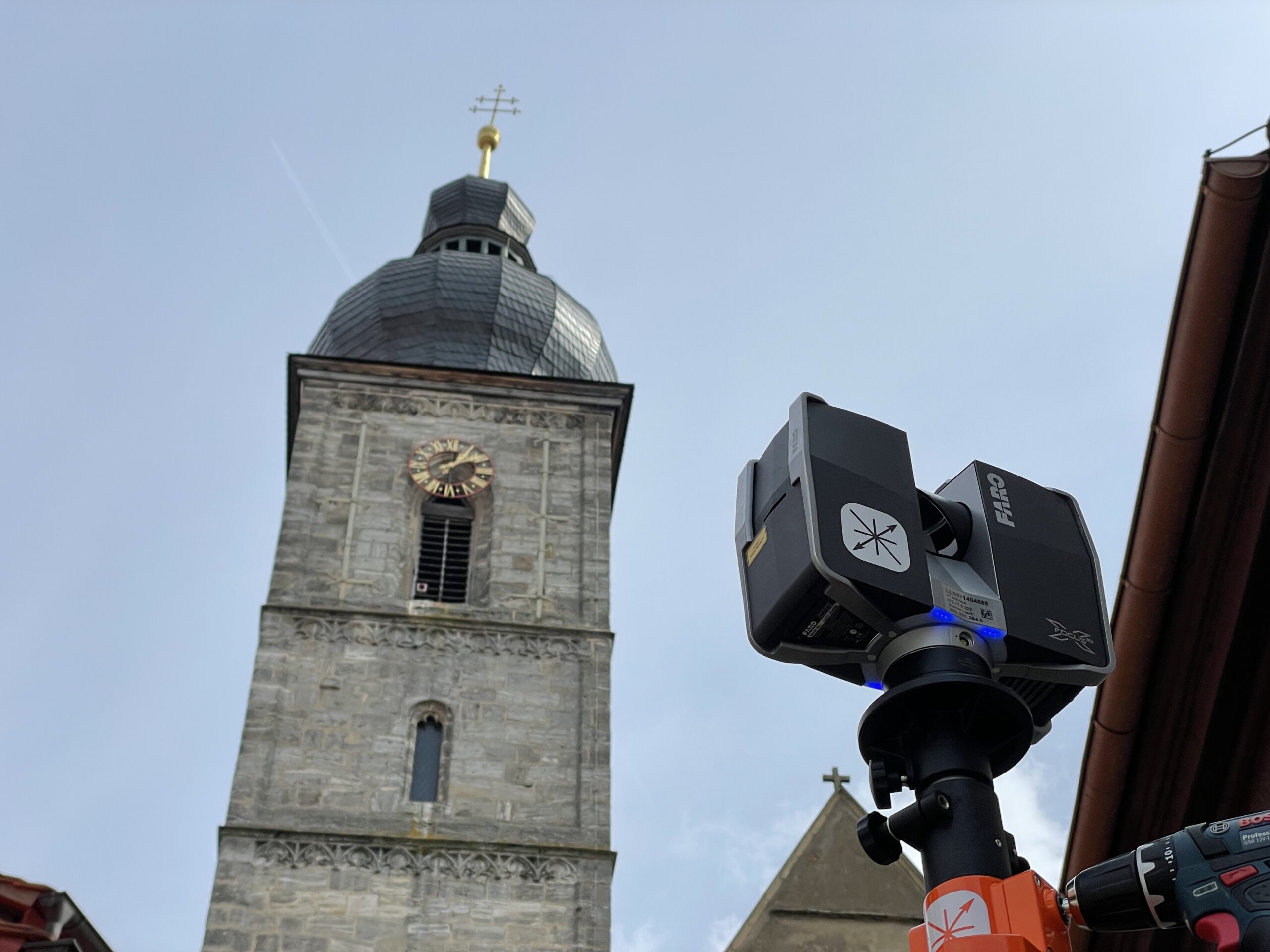
Anything that can be called a structure. We specialize in the fast, three-dimensional capturing of large property portfolios. Our services include supporting new constructions, surveying complex infrastructure components, as well as documenting a 1,200-year-old church—these are just some of the areas we cover.
A few examples can be found below:
We generate highly accurate, millimeter-precise 3D models of all types of buildings. But why does that matter to you? Because it saves time, reduces costs, minimizes stress, and lays a reliable foundation for confident planning.
You can only plan effectively and avoid costly mistakes when you fully understand the existing structure.
Learn more about how 3D laser scanning provides a solid basis for planning.
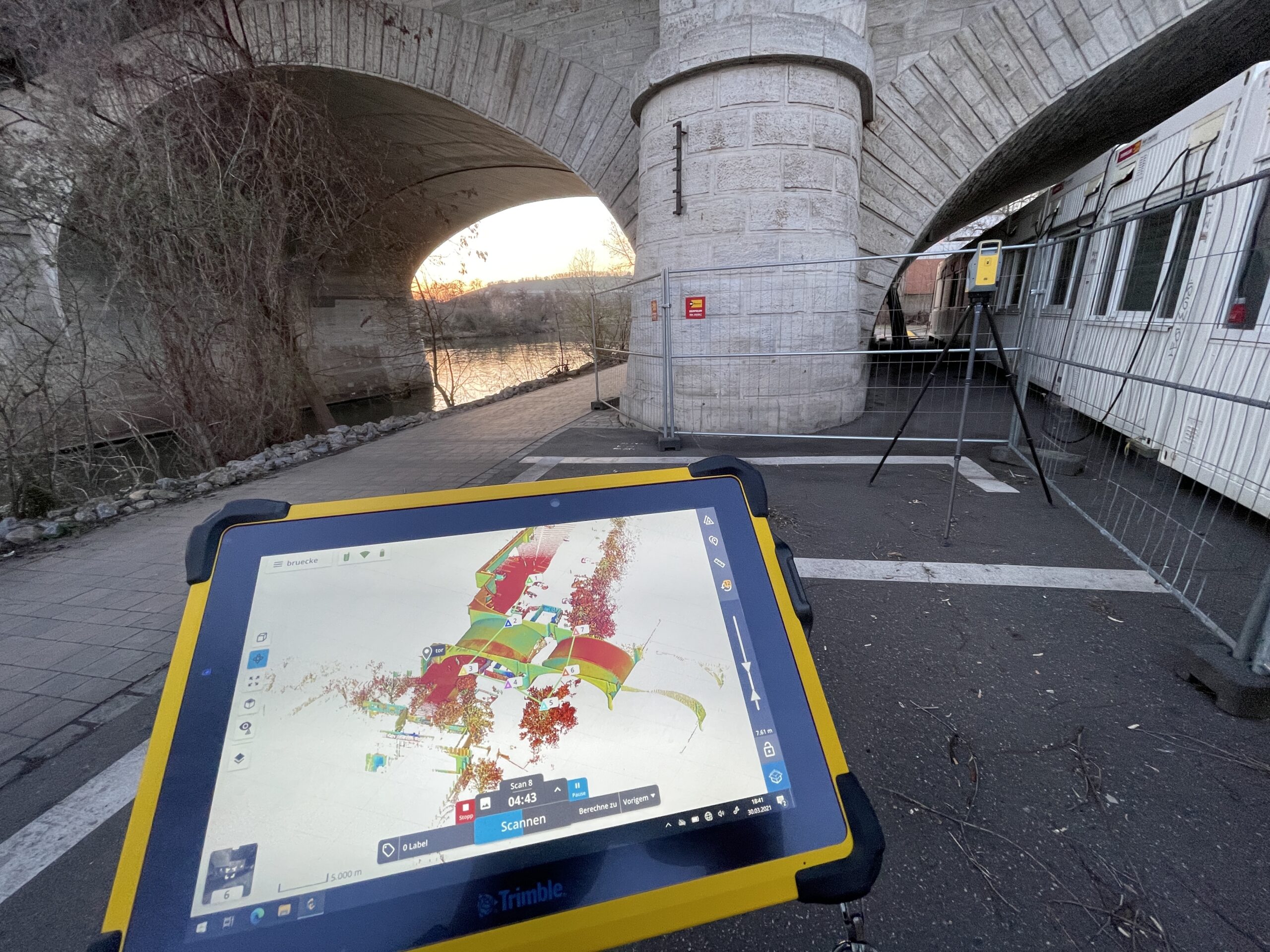
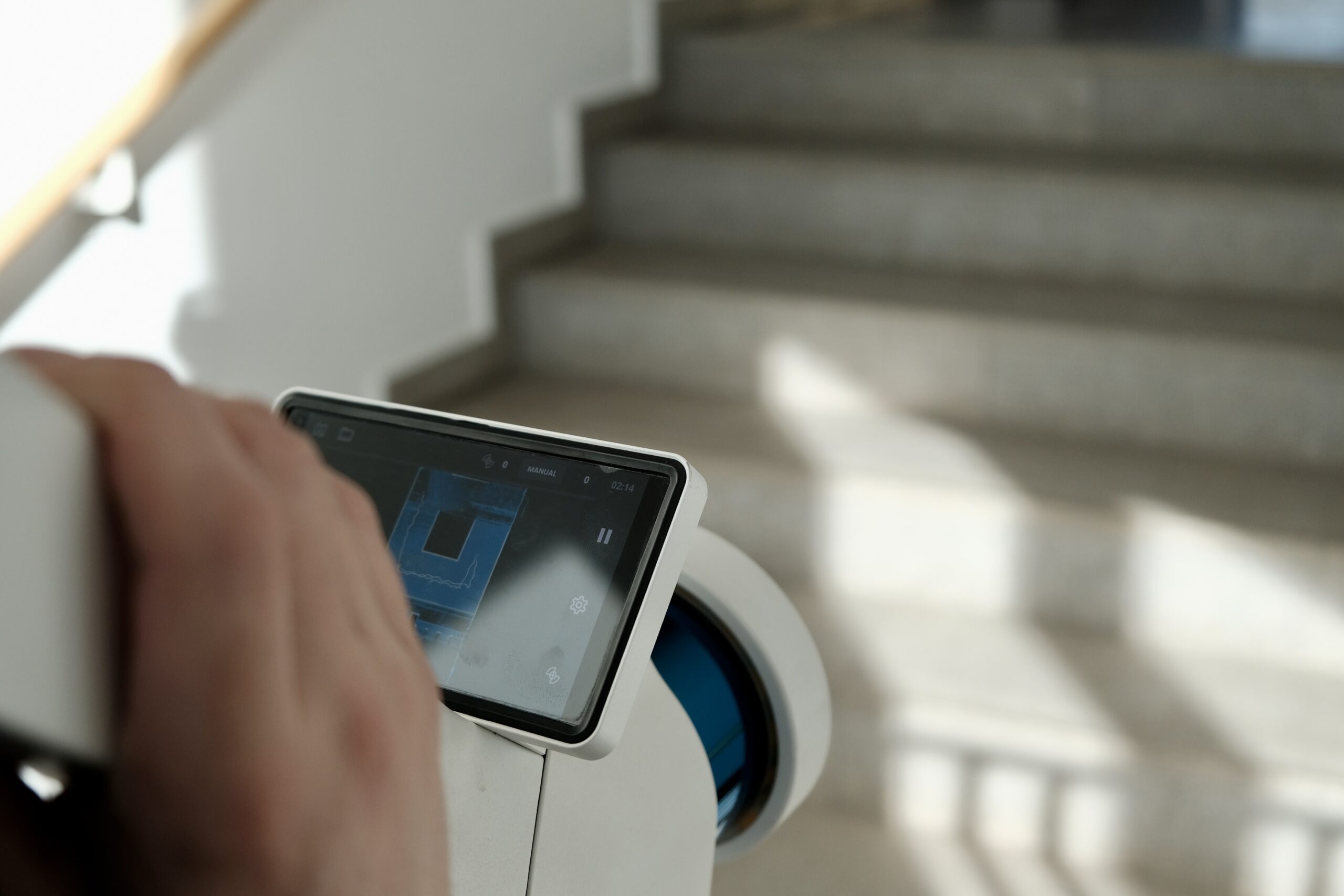
Fieldwork represents only a small part of the service. A building can be captured with minimal effort, and the evaluation can be postponed until it’s actually needed. Think of it as a kind of insurance.
Virtual construction meetings, virtual facility management, virtual building walkthroughs, digital twins of entire production environments:
3D laser scanning is the bridge from the physical to the digital world. A leaner organizational structure and reduced resource consumption are welcome side effects.
You can find examples of virtual tours based on 3D laser scanning here
Fieldwork in laser scanning may seem straightforward. But delivering high-quality point clouds that truly meet accuracy requirements takes experience and in-depth expertise. When it comes to capturing complex structures or large properties, or merging point clouds from multiple devices, firms that only offer laser scanning as a side service quickly reach their limits. Key factors for success include:
Ensuring quality, however, is only one side of the coin. A service must also be cost-effective and help our clients save money. That’s why, in addition to quality, our speed—from initial inquiry to on-site scanning to final data delivery—is a unique feature we proudly stand behind.
Ask our clients—or see for yourself.
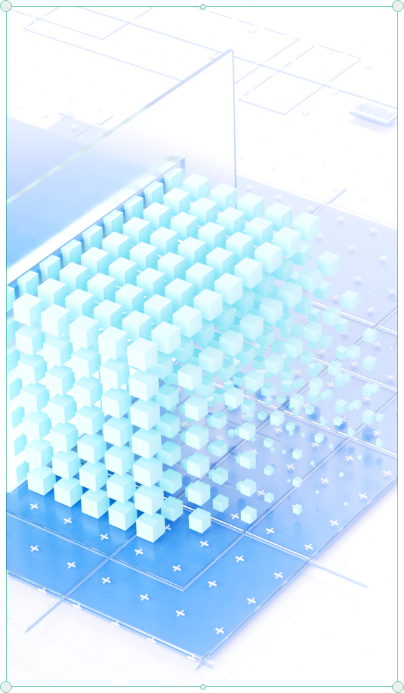

A great service starts with choosing the right scanning method. “More accurate” isn’t always better—what matters most is the cost-effectiveness of our work in the context of your project.
Working with a terrestrial laser scanner is most comparable to traditional surveying. The device is set up stationary—much like a total station—and captures individual scans from various positions, which are later aligned and merged during post-processing.
We use terrestrial laser scanners under the following conditions

High-precision Measurements for Industrial Plant Construction

Terrestrial Laser Scanning for Infrastructure Applications
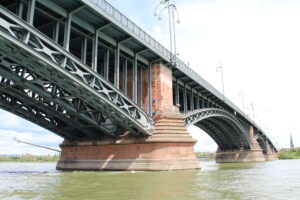
Surveying of High-Rise Facades
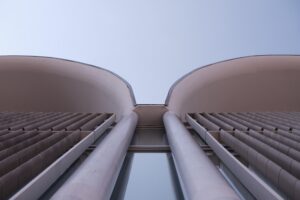
Detailed Documentation of Historic Buildings

Time is money–and when it comes to cost-effective laser scanning, mobile mapping is essential. Soon, it won’t be a question of if a building is scanned, but simply that it is. Mobile mapping devices capture data while being carried or moved through a building.
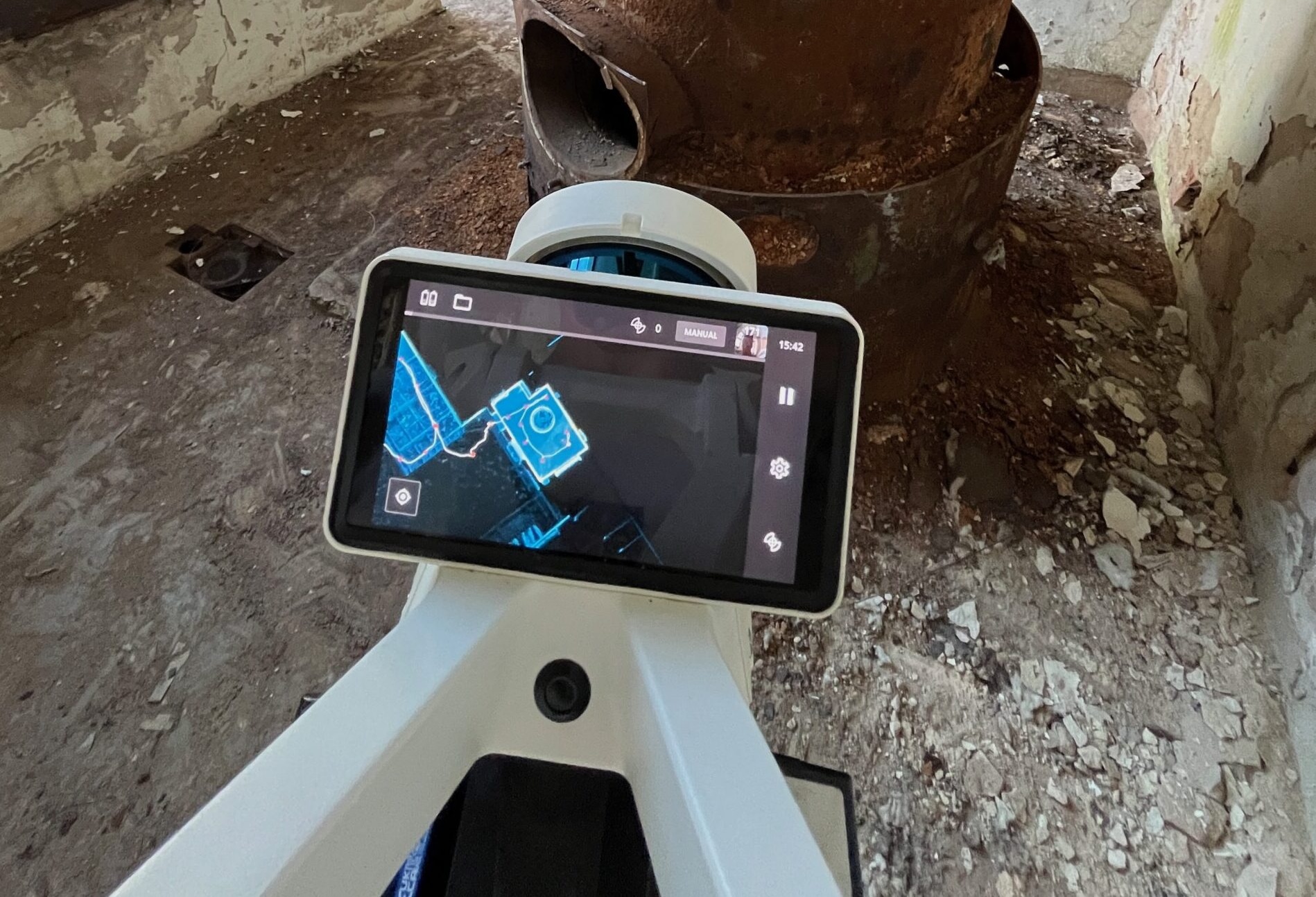
The laser scanners orient themselves autonomously during the survey.
The algorithm that makes this possible is called SLAM – Simultaneous Localization and Mapping.
Want to learn more about mobile mapping?
In terrestrial laser scanning, a stationary laser scanner is placed on a tripod. The scanner emits laser beams that are reflected by surfaces. From these reflections, the scanner calculates the distance, angles, and positions of each point, creating a point cloud. This technology is ideal for complex structures and hard-to-reach areas, as it offers extremely high accuracy.
Mobile mapping with portable devices uses the SLAM algorithm (Simultaneous Localization and Mapping) to capture LiDAR data and positional information while the device is in motion. SLAM combines these data in real-time, tracks the movement of the device, and creates an accurate point cloud of the surroundings. This allows the device to efficiently scan large areas without needing fixed tripod positions. The user carries or holds the device while continuously collecting 3D data. This method enables fast and flexible data capture, even in complex environments and over large areas.
Terrestrial laser scanning and mobile mapping can be combined and complement each other well to provide comprehensive survey data. Terrestrial laser scanning is stationary and offers extremely high accuracy when capturing detailed point clouds of specific areas, making it ideal for precise measurements of building structures and hard-to-reach details.
Mobile mapping, on the other hand, captures data while in motion and is excellent for larger areas and complex environments, such as roads or large interiors, where speed and efficiency are crucial.
Combining both methods allows for complete coverage and the capture of both detailed and large-scale structures. Mobile mapping provides a rapid scan of the environment, while terrestrial scanning adds high-accuracy details, resulting in a seamless and precise overall model.